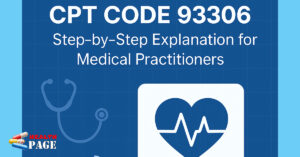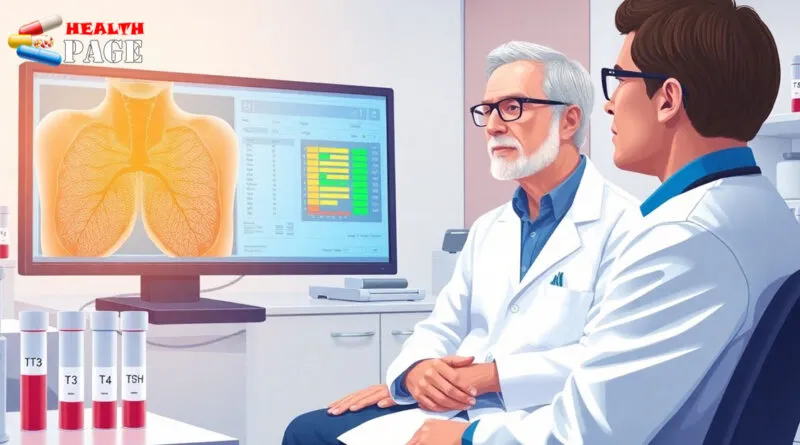Understanding Subclinical Hyperthyroidism and Its ICD-10 Coding: A Comprehensive Guide
Thyroid problems are more common than many realize. Millions worldwide struggle with various thyroid disorders. Among them, subclinical hyperthyroidism often goes unnoticed because it shows subtle signs or none at all. Yet, this condition can lead to serious health issues if ignored. Accurate diagnosis and proper coding with ICD-10 are vital for treatment and insurance purposes. Knowing how to identify and categorize subclinical hyperthyroidism icd 10.
What Is Subclinical Hyperthyroidism?
Definition and Diagnostic Criteria
Subclinical hyperthyroidism happens when the thyroid gland produces slightly too much hormone. Unlike overt hyperthyroidism, you may feel fine or have vague symptoms. Doctors mainly spot it through blood tests showing low TSH (thyroid-stimulating hormone). Meanwhile, T3 and T4 levels stay normal. This makes it tricky to diagnose without lab work. It’s like a warning sign before full-blown hyperthyroidism takes over.
Epidemiology and Prevalence
Studies show that about 0.5% to 2% of adults have subclinical hyperthyroidism. It’s more common in older adults, especially women. Risk factors include past thyroid treatments or iodine intake. The condition often sneaks under the radar because many people don’t notice symptoms at first.
Clinical Significance
Some people with this disorder feel perfectly fine, while others experience symptoms like rapid heartbeat or anxiety. Long-term, untreated subclinical hyperthyroidism can cause serious health problems. It could increase the risk of osteoporosis and heart issues. Detecting and managing it early helps prevent these complications.
Causes and Risk Factors
Common Causes
- Graves’ disease: An autoimmune disorder that boosts thyroid activity.
- Toxic multinodular goiter: Multiple nodules produce excess hormone.
- Autonomous nodules: Single nodules that secrete hormones without control.
Risk Factors
- Age over 60
- Female gender
- History of thyroid surgery or radiation therapy
- Excess iodine intake
Pathophysiology Overview
Basically, these causes trick the thyroid into making more hormones, which suppress TSH levels. The low TSH signals your body that there’s enough hormone, even if the thyroid is actually overactive. It’s like a false alarm system that needs checking.
Diagnosis and Evaluation
Laboratory Tests
The main tests are blood work highlighting:
- Low TSH levels
- Normal T3 and T4 levels Additional tests, like thyroid antibody tests and radioactive iodine scans, add more information.
Role of Imaging
Ultrasound scans reveal the structure of the thyroid. They help identify nodules or other abnormalities. Radioactive iodine scans show if parts of the thyroid work independently, pointing to autonomous nodules.
Differential Diagnosis
It’s vital to distinguish subclinical hyperthyroidism from other issues. For instance, lab errors or assay interference can mimic the disorder. Proper testing and clinical context are necessary to avoid misdiagnosis.

ICD-10 Coding for Subclinical Hyperthyroidism
Importance of Accurate Coding
Proper coding impacts treatment decisions. It also affects insurance claims and helps gather accurate health data. Using the right ICD-10 code is essential for clear communication with healthcare systems and insurers.
Relevant ICD-10 Codes
- E05.00: Toxic diffuse goiter without thyrotoxic crisis or storm
- E05.01: Toxic diffuse goiter with thyrotoxic crisis or storm
- E05.90: Thyrotoxicosis, not otherwise specified, without mention of toxic diffuse goiter or toxic multinodular goiter
Note that subclinical hyperthyroidism isn’t always directly coded. Instead, clinicians use these codes based on specific diagnoses.
Coding Guidelines and Best Practices
Pick the code that fits the patient’s presentation. For example, if the patient shows no symptoms but has lab findings, document carefully. Clear documentation helps ensure correct coding and reimbursement.
Management and Treatment Strategies
Observation and Monitoring
In many cases, especially if the person is asymptomatic, doctors recommend watchful waiting. Regular blood tests and follow-ups every 6-12 months help track the condition.
Medical Treatment Options
If symptoms or risks increase, doctors might use:
- Antithyroid medications to curb hormone production
- Beta-blockers to manage rapid heartbeat or anxiety
Addressing Underlying Causes
Treatments focus on the root issue—whether it’s Graves’ disease or nodules. Sometimes, surgery or radioactive iodine therapy becomes necessary to remove or disable overactive tissue.
Risks of Untreated Subclinical Hyperthyroidism
Without treatment, risks include weakened bones (osteoporosis) and irregular heartbeats like atrial fibrillation. These can lead to serious health events such as strokes or fractures.

Prognosis and Long-term Outlook
The course varies from person to person. Some cases resolve on their own, while others develop into overt hyperthyroidism. Regular monitoring is key to catching changes early and adjusting treatments.
Expert Insights and Recommendations
Endocrinology guidelines stress the importance of precise diagnosis and tailored management. Clinicians should document carefully to support ICD-10 coding. Patient education about symptoms and risks also plays a big role. Empower patients to seek regular checkups and report any new symptoms.
Conclusion
Subclinical hyperthyroidism is a subtle but important health issue. Correctly diagnosing and coding it with ICD-10 helps ensure proper care. Staying alert to its risks means better health outcomes and prevention of serious complications. Early detection and appropriate treatment make a real difference for those affected. Keep an eye on your thyroid health and work with your doctor to stay safe.


